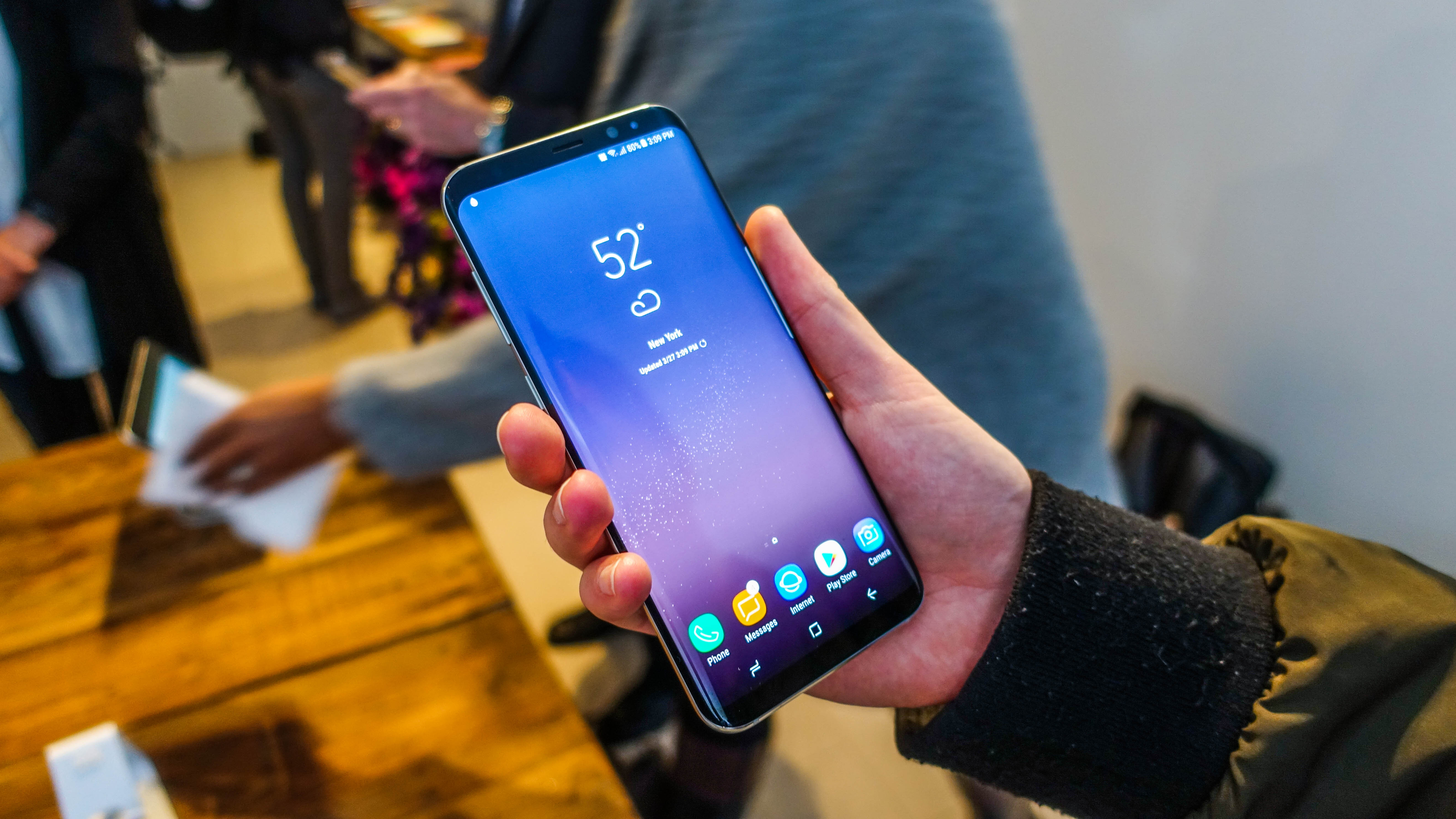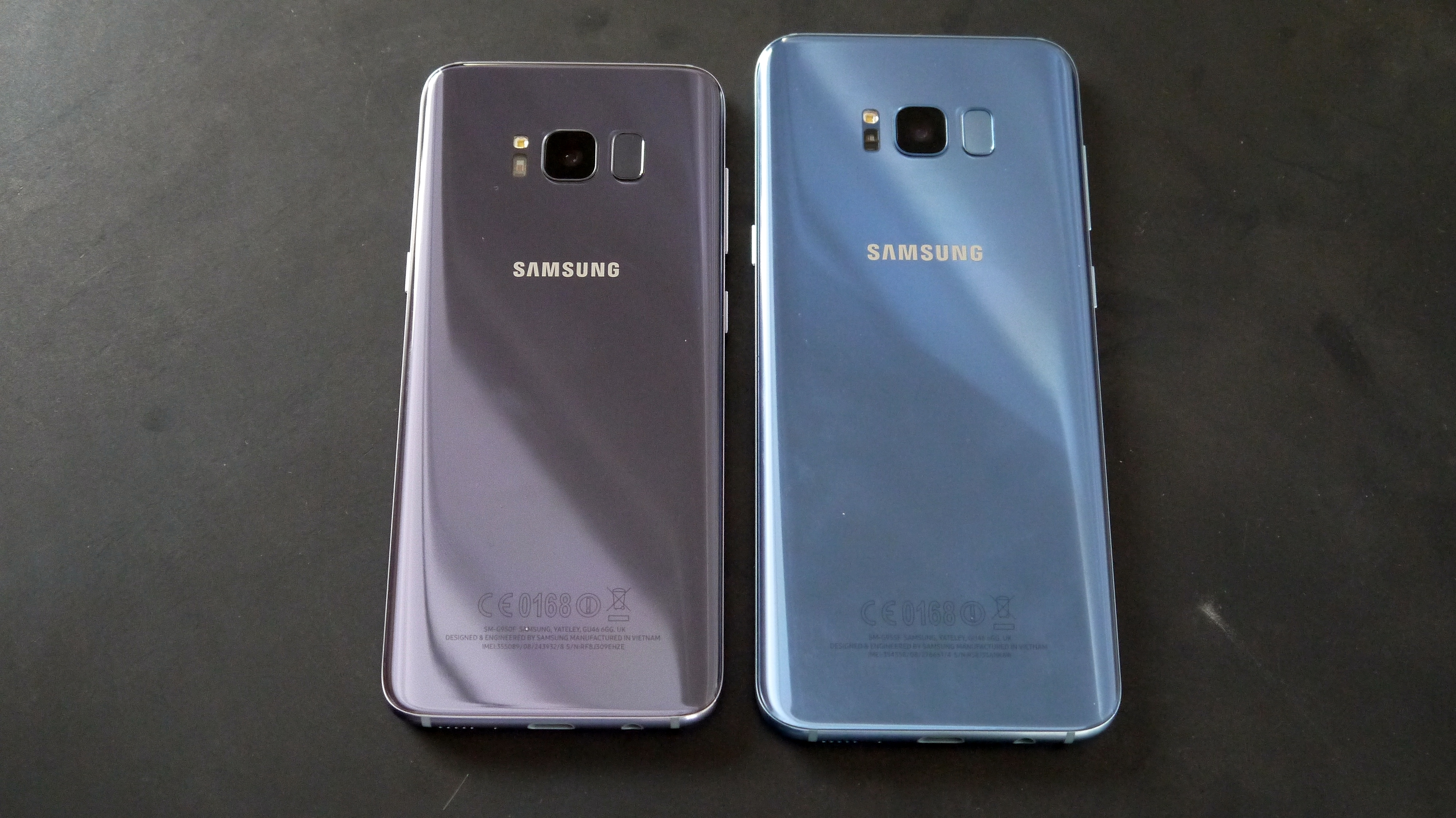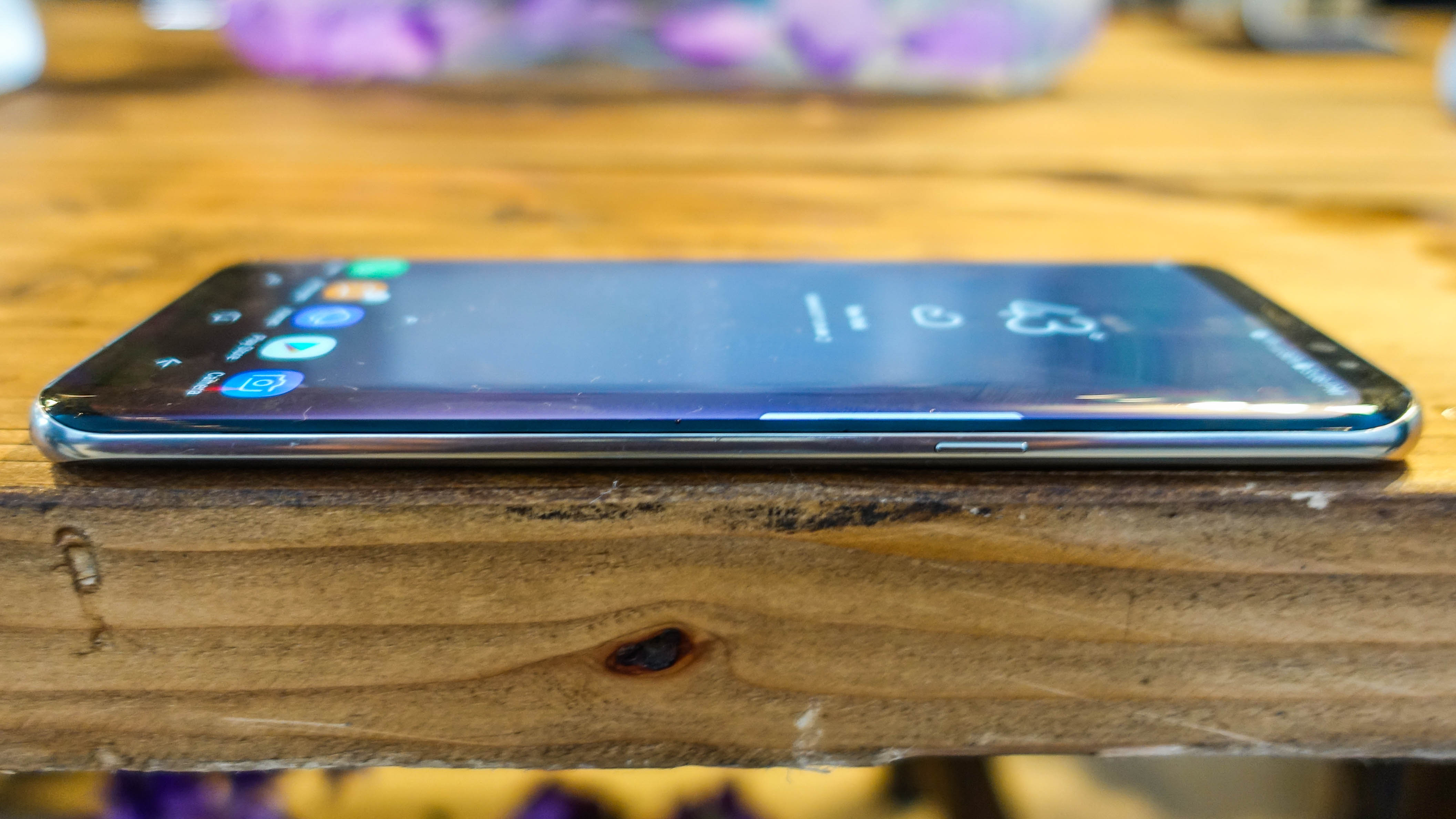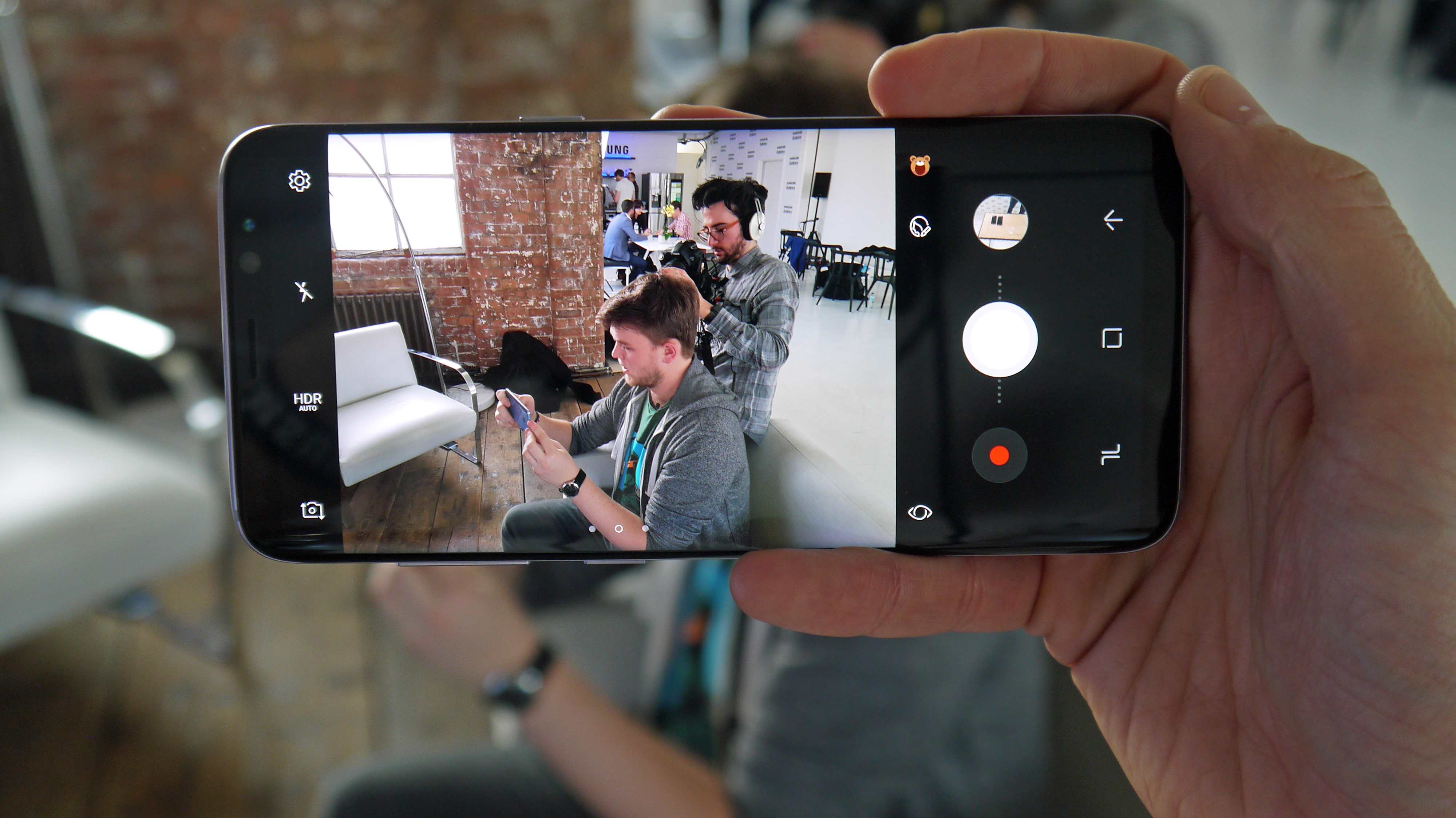Samsung's just announced two new flagship phones, with the Samsung Galaxy S8 joined by the larger Samsung Galaxy S8 Plus – a phone that’s a successor to the Samsung Galaxy S7 Edge in all but name.
But with the standard S8 also sporting a curved screen the differences between the two are less obvious than the differences between the Galaxy S7 and S7 Edge were.
So to give you a clearer picture we’ve created a breakdown of the ways in which these two phones differ, and the things that are the same.
Screen
While the Galaxy S7 Edge’s screen is very different to the Samsung Galaxy S7’s by virtue of being curved, the same difference isn't present this year, as both the Samsung Galaxy S8 and Samsung Galaxy S8 Plus have a curved display – hence why the Edge name has been ditched.
They also both use Super AMOLED technology, and they both have a widescreen 18.5:9 aspect ratio with a 1,440 x 2,960 resolution – which is an upgrade on the 1,440 x 2,560 screen on last year’s handsets.

So, as you’ve probably guessed, it’s the size that's the real difference, as the Samsung Galaxy S8 has a 5.8-inch display, while the Samsung Galaxy S8 Plus has a 6.2-inch one.
It’s worth noting that this means the screen on the S8 Plus is less sharp, but it’s not a difference you’re likely to notice much, as there are pixels to spare.
Design
The Samsung Galaxy S8 and Samsung Galaxy S8 Plus have an almost identical design, with a glass back, a metal frame and tiny bezels above and below the screen.
There is no physical home button on either phone and the fingerprint scanner has been relocated to the back. Both the S8 and S8 Plus are also water and dust resistant.
The differences, again, are related to their size. The Samsung Galaxy S8 is 148.9 x 68 x 8mm, while the Samsung Galaxy S8 Plus is 159 x 74 x 8mm, meaning they're the same thickness, but the S8 Plus is significantly longer and wider.

These dimensions make the S8 Plus a phablet-sized phone, and even the standard S8 slightly on the large side, but neither is as big as you might expect given their screen sizes.
By almost eliminating the bezel Samsung has managed to make the standard Samsung Galaxy S8 smaller than the Samsung Galaxy Note 7, while the Samsung Galaxy S8 Plus is a similar size overall to the iPhone 7 Plus.
Of course the S8 Plus is heavier than the S8 as well as being larger, but it shouldn't weigh you down too much.
OS and power
There's no difference here, or not between the Galaxy S8 and the Galaxy S8 Plus at any rate, but there are different versions of the phone for different regions.
Both handsets have 4GB of RAM, but the chipset may differ depending on where you are. Samsung hasn't confirmed the name of the chip(s) it's using, but we do know they're octa-core and clocked at up to 2.35GHz.
It's likely that the US is getting a Snapdragon 835, while Europe and most other locations may get an Exynos 8895.

The split - if there is one - isn’t one you should worry about too much, as those are both top-end chips.
Both the Samsung Galaxy S8 Plus and the standard Samsung Galaxy S8 also run Android Nougat, overlaid with Samsung’s TouchWiz UI.
Camera
This too is the same for both phones, and also something which isn’t much different to last year’s, with a 12MP single-lens snapper on both the S8 and S8 Plus – just like the S7 and S7 Edge had.

But the front-facing camera has at least been upgraded, with both handsets getting an 8MP one, where the S7 range has a 5MP one. Of course megapixels aren't everything, so we'll let you know in our full reviews exactly how good the cameras on the S8 and S8 Plus are.
Battery
Other than the screen, the battery is the biggest difference between the Samsung Galaxy S8 and the Galaxy S8 Plus, as Samsung is using the extra space inside the S8 Plus to pack in a 3,500mAh juice pack, where the standard Galaxy S8 has just a 3,000mAh one.
It’s worth noting that neither size is massive, especially given the size of the phones they’re powering. The S8’s is the same size as the S7’s, and the battery in the S8 Plus is actually marginally smaller than the 3,600mAh one in the Galaxy S7 Edge.

That’s a worry, but it’s a decision that could have been made to avoid risking another Note 7-like catastrophe. And, given the more power-efficient chipsets, these batteries may last longer than similarly sized ones in other phones - we'll let you know when we've thoroughly tested them. Both handsets also support fast charging via a USB Type-C port.
Price
You can expect the bigger phone to carry a higher price tag, and while Samsung hasn't confirmed exactly what that will be, rumors point to a roughly $950/£780/AU$1,255 price for the Samsung Galaxy S8 Plus, and a lower – but still very high – price of around $845/£695/AU$1,115 for the Samsung Galaxy S8. In other words, there might be a difference of approximately $100/£100/AU$140.
Takeaway
There's not a huge amount of difference between the Samsung Galaxy S8 and the Samsung Galaxy S8 Plus. Where previously Samsung differentiated largely based on the presence or absence of a curved screen, now all models have curves.
You also can’t really think of one as being a phablet while the other one is a ‘normal’ handset, as with even the standard Galaxy S8 coming in at 5.8 inches both of them are phablet-sized.
But at 6.2 inches the Samsung Galaxy S8 Plus is still significantly larger, and the bigger battery might give it longer life.
Otherwise, there looks to be little to choose between them, with the Galaxy S8 having a slightly sharper screen and more manageable dimensions, but the Galaxy S8 Plus being a better bet for real phablet fans. If the prices are right, they should both be very desirable handsets.
- Will either of these handsets trouble our list of the best phones?
from TechRadar: Phone and communications news http://www.techradar.com/news/samsung-galaxy-s8-vs-samsung-galaxy-s8-plus-whats-the-difference
No comments:
Post a Comment